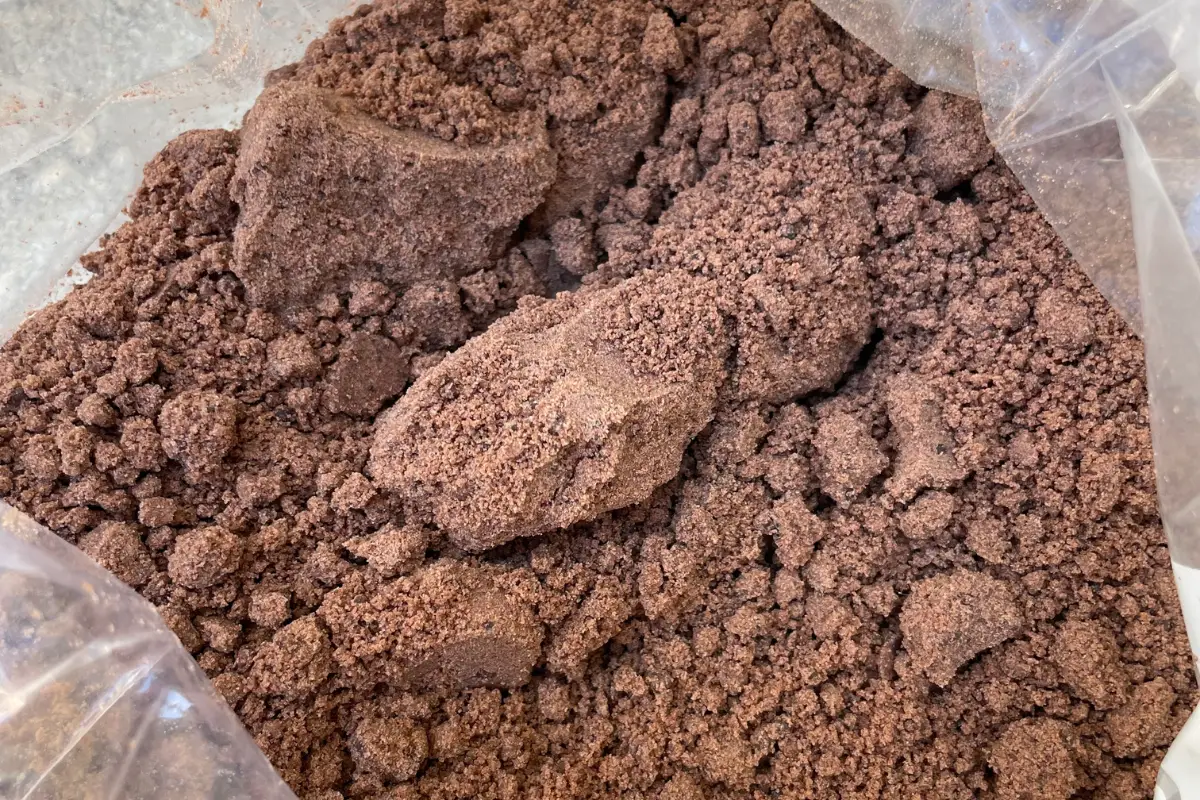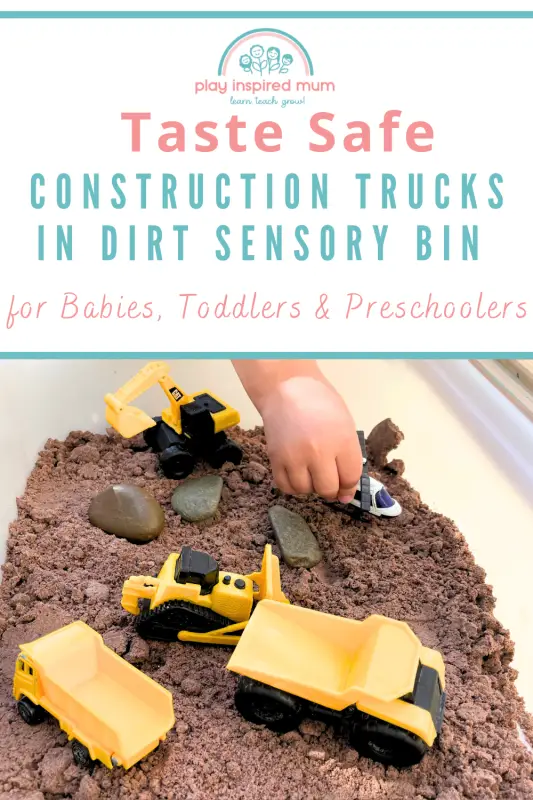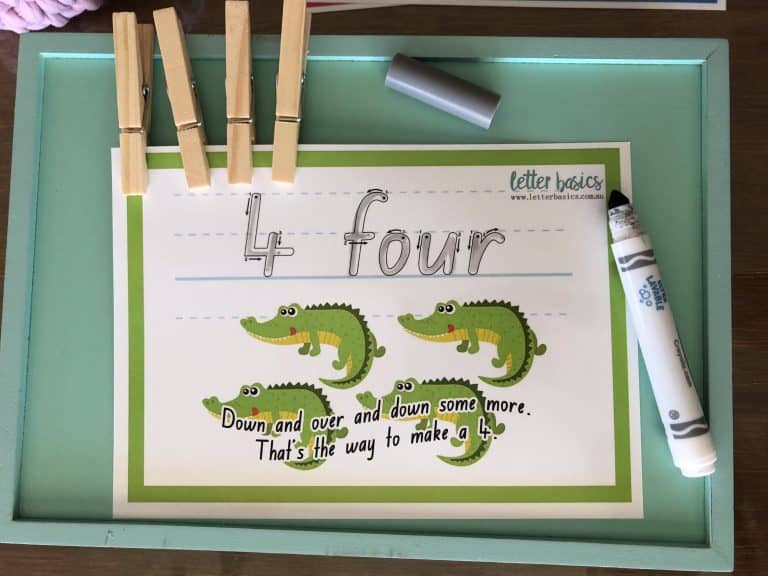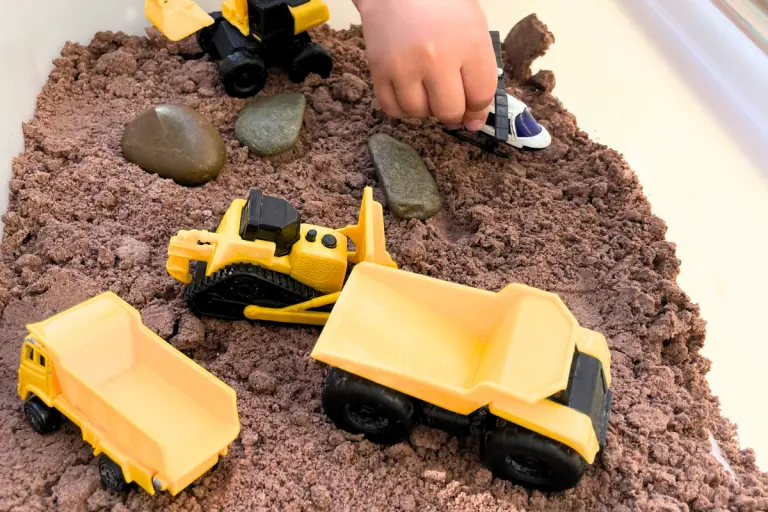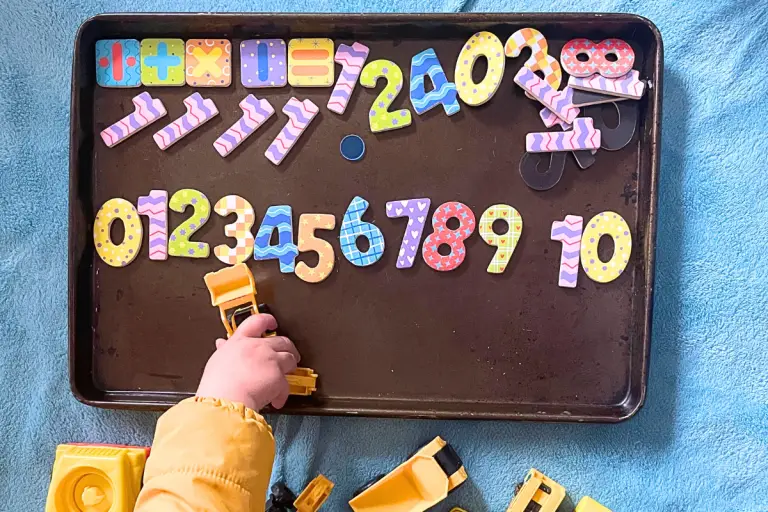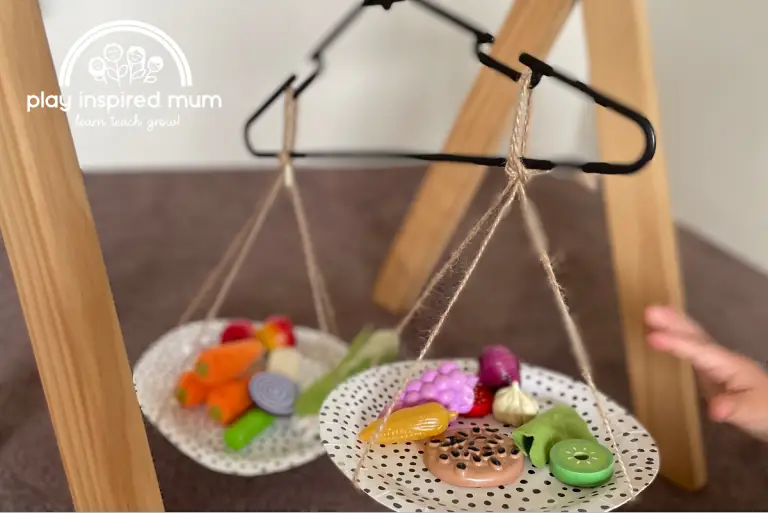Taste Safe Dirt Recipe
Disclosure: This blog contains affiliate links which I may earn a small commission from if you purchase through them, at no extra cost to you.
Learn how to make taste-safe dirt for sensory play with toddlers and preschoolers.
Taste-safe dirt is a sensory play material that is safe for toddlers to taste and play with.
It is made using edible ingredients that are safe for consumption. Therefore, do not pose a risk to your child’s health if ingested.
We use taste-safe dirt in sensory play activities to help children develop their sense of touch, explore textures and stimulate their creativity and imagination.
It is an excellent alternative to traditional play materials like sand, dirt, and clay which may not be safe for young children to ingest.
Taste-safe dirt can be made using staple pantry ingredients including flour, cocoa powder, and oil. It can be customized with scents to enhance the sensory experience for children.
Learn how we make our taste-safe dirt for fun messy sensory play!
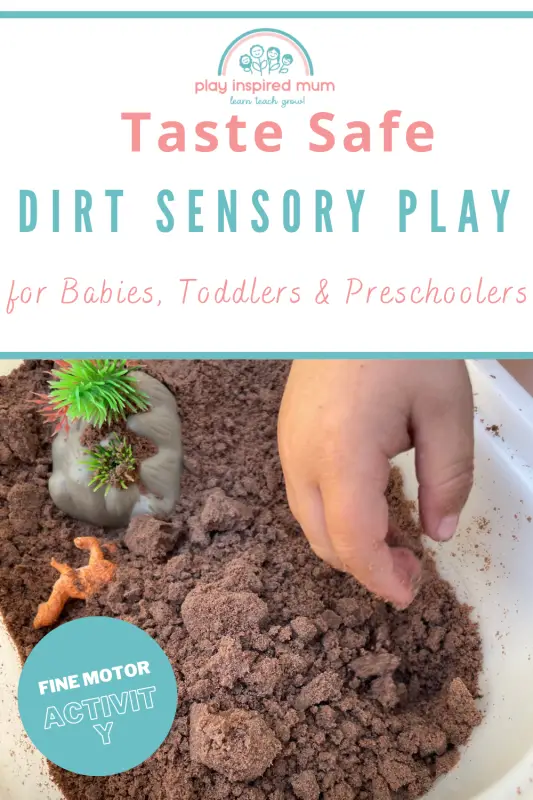
Taste Safe Dirt Recipe
Following your child’s interests is a must in creating play activities that they are going to enjoy.
Lately, Mr 2 has been all about dinosaurs and construction trucks. We have been having a lot of road works in our community so trucks and construction vehicles of all types have dominated our morning scooter rides. He loves watching the trucks, bulldozers, and excavators.
Creating a small world for him to expand his interest in construction trucks was a must. Here is the taste-safe recipe we use.
What you need to make taste safe dirt
- 3 1/2 cups plain flour (baked for taste safe)
- 3/4 cup cocoa
- 1 cup oil (we used rice bran oil)
- Bowl
- Spoon
This recipe makes enough taste-safe dirt to comfortably cover the base of the larger insert tub of our flisat table.
We used rice bran oil as we had plenty on hand and it is a more affordable choice. You can swap this out for any plant-based oil. We have used sunflower, grapeseed, and olive oil with similar results before.
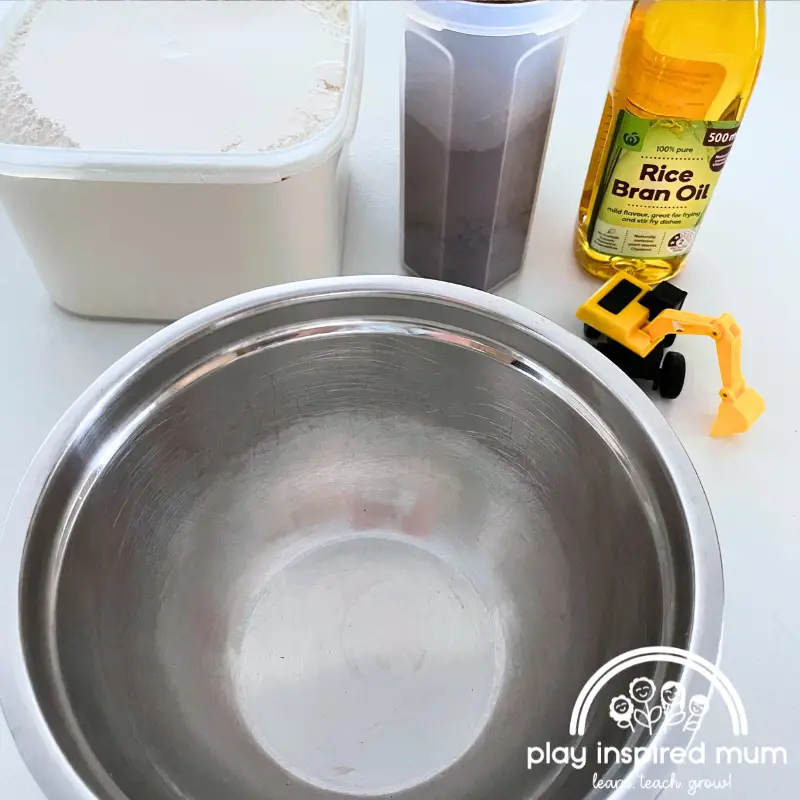
Why does flour need to be baked to make it taste safe?
Baking the flour is the key to making this recipe taste safe.
Flour needs to be baked to make it taste safe because raw flour may contain harmful bacteria such as E. coli and Salmonella. It is these bacteria that can cause food poisoning if ingested.
These bacteria can be present in raw flour because the grains used to make the flour may come into contact with animal feces or other contaminants during the harvesting or processing stages.
When flour is baked, it reaches a temperature that is high enough to kill any harmful bacteria that may be present, making it safe to consume.
Simply spread the flour onto a baking tray and bake at 160°C for 5 minutes before letting it cool before use.
How to make taste-safe dirt for sensory play
- Place the flour and cocoa into the bowl.
- Add half the oil to the bowl
- Slowly stir the oil into the flour and cocoa using the spoon. Start off slow to avoid a cloud of flour all over your bench top.
- Add the remaining oil and continue to stir until the mix starts to come together.
- Once you taste safe dirt has come together as much as it can, start to work the mix with your hands. It will look quite dry until you work the oil into the flour.
This is such a quick-to-set-up recipe. Mr 2 loved helping to stir the ingredients together.
Involving your child in the setup is a great way to invest their interest in the activity. They are more likely to join in if they are part of the setup.
How to play with taste-safe dirt for sensory play
Are you ready to get your hands dirty with some taste-safe fun?
Let’s play with your fresh batch of homemade taste-safe dirt!
Here’s how:
- Create a sensory bin: First, find a container and fill it up with your taste-safe dirt. You can add in some other sensory items like rocks, seashells, or toys to create a fun and interactive sensory bin.
- Dig in: Encourage your little one to dig in with their hands and explore the texture of the dirt. They can squish it, roll it into balls, or flatten it out like a pancake.
- Get creative: Use tools like cookie cutters or plastic spoons to make fun shapes and designs in the dirt. You can even add in some natural dyes like beet juice or turmeric to create different colors and enhance the sensory experience.
- Make a mess: Don’t worry about the mess! Sensory play is all about exploring and having fun, so embrace the mess and enjoy the moment. Either set up the activity outside or if that’s not an option, the bottom of your shower for easy clean up. The play is worth the mess!
Remember to supervise your little ones during sensory play and keep an eye on them to ensure they are playing safely.
Have fun getting messy and exploring with taste-safe dirt!

Construction Vehicle Play
Add some construction trucks and loose parts to a sensory bin with fake dirt.
We added some river stones and pebbles to create a construction site.
Farm Play
Use pretend food to create fields ready to be harvested. Bury the toys in the dirt to be dug out.
Dinosaur Fossil Dig
Lay dinosaurs flat on a shallow tray. Add the fake dirt and press gently to cover the dinosaurs. Use a paintbrush to reveal the dinosaurs hidden under the dirt.
Insect Dig
Bury toy insect figures in the dirt. Give your toddler a scoop and sieve to dig out the insects. Add loose parts such as natural branches and leaves to add another sensory element.
Why play with taste-safe dirt?
Taste-safe dirt is fun.
It encourages a child’s natural curiosity.
There are no right or wrongs to the play.
Play with taste-safe dirt offers so many learning opportunities for your toddler!
Why is sensory play important for toddlers?
Sensory play is incredibly important for toddlers as it provides a variety of benefits that support their overall development. Here are some of the key reasons why sensory play is essential for young children:
- Promotes cognitive development: Sensory play helps toddlers build important cognitive skills like problem-solving, critical thinking, and decision-making. As they explore different textures, colours, and shapes, they learn to make connections and develop an understanding of cause and effect.
- Supports language development: Sensory play provides opportunities for toddlers to learn new words and concepts as they describe the materials they are playing with. This helps them expand their vocabulary and develop their language skills.
- Enhances motor skills: Sensory play requires toddlers to use their hands and fingers to manipulate and explore different materials. This helps develop their fine motor skills. This is important for future activities like writing, drawing, and using utensils.
- Improves social skills: Sensory play can be a great way for toddlers to interact with others and practice social skills like sharing, turn-taking, and cooperation. This helps them build important social-emotional skills that are essential for success later in life.
- Encourages creativity: Sensory play provides opportunities for toddlers to use their imaginations and creativity to explore new materials and create their own unique experiences. This helps foster a love of learning and a desire to explore and discover new things.
Sensory play is an incredibly valuable tool for toddlers as it helps them develop a wide range of skills and abilities that will serve them well throughout their lives.
By providing opportunities for sensory play, parents and caregivers can help support their child’s overall development and encourage a love of learning and exploration.
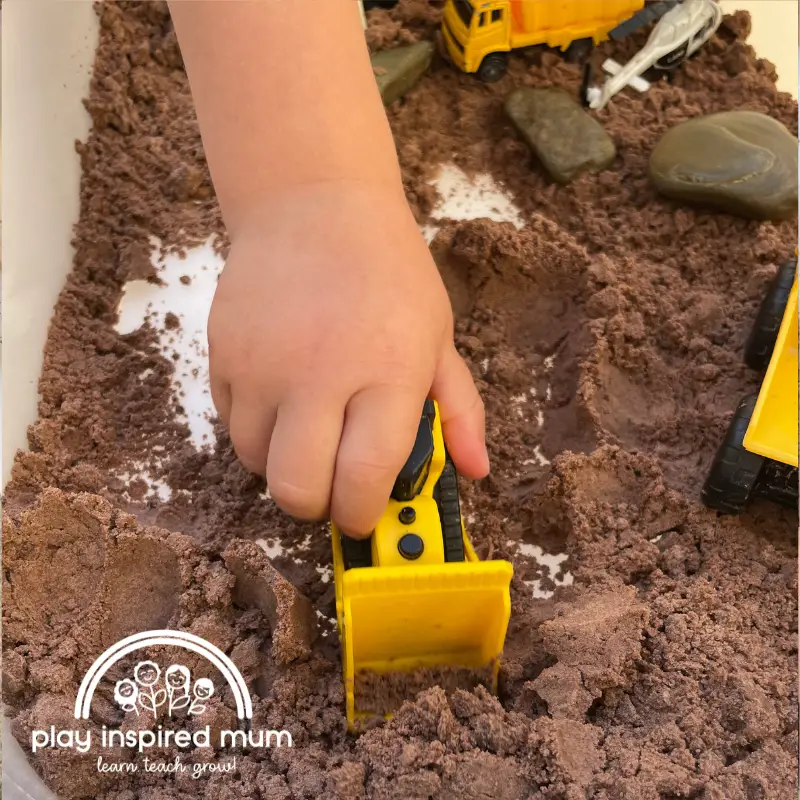
What are the specific benefits of sensory play with taste-safe dirt
Sensory play with taste-safe dirt provides a variety of benefits that support toddlers’ physical, cognitive, social, and emotional development.
Here are some specific benefits of sensory play with taste-safe dirt:
Develops fine motor skills
Play with taste-safe dirt requires toddlers to use their hands and fingers to manipulate and mold the material. Every movement helps to develop their fine motor skills. This is important for future activities like writing, drawing, and using utensils. Mr 2 has recently discovered pinching. During play with taste-safe dirt, I encouraged him to press the dirt into the walls before pinching the raised edge. This reminded him that pinching hurts but he can pinch play dough and dirt without hurting anyone.
Enhances sensory exploration
Taste-safe dirt provides a unique sensory experience for toddlers. They can explore the texture, smell, and taste of the material. This helps to develop their sensory processing abilities. It also encourages them to use their senses to explore and learn about the world around them.
Encourages creativity and imagination
Taste-safe dirt is a versatile material that can be molded into different shapes and designs. This encourages toddlers to use their imaginations and creativity to create their own unique experiences and explore their world in new and exciting ways.
Fosters language development
Toddlers who explore taste-safe dirt are exposed to new words and concepts that help to expand their vocabulary and develop language skills. This can be positional language, adjectives, and so much more.
Provides a safe and non-toxic sensory experience
Taste-safe dirt is made with edible ingredients that are safe for toddlers to taste and play with. This provides a safe and non-toxic sensory experience for young children, which can help to alleviate any concerns parents may have about the safety of sensory play materials.
Provides opportunities to experiment with cause and effect
This taste-safe dirt recipe compacts under firm pressure and crumbles when rubbed. You can mold it easily, and it’s effortless to work with. Experiment with pressure and press it into shapes. Explore how much is needed to have the dirt retain its shape or give way.
Strengthens comprehension through role play
Role play is a great way for children to practice what they have seen or experienced. It allows them to process their world to develop a deeper understanding of their experience. Setting up a small world with taste-safe dirt to replicate an event can expand toddlers’ experience. This can give them a chance to ask questions, practice memory recall, and develop a deeper understanding with the guidance of open-ended questions.
This fake dirt recipe is so easy to make at home. Sensory play can be overwhelming for some parents however it need not be. You can easily create some amazing sensory bins at home that will support your child’s learning through play. That and all the fond childhood memories that will last forever.

